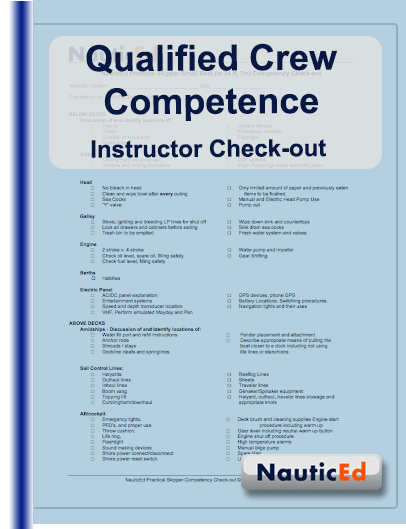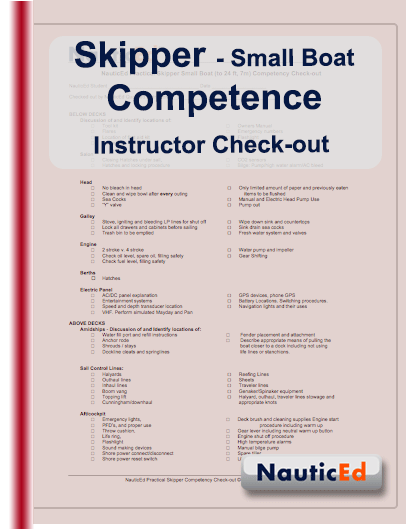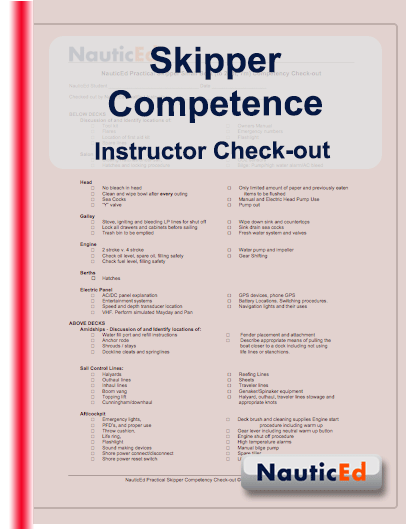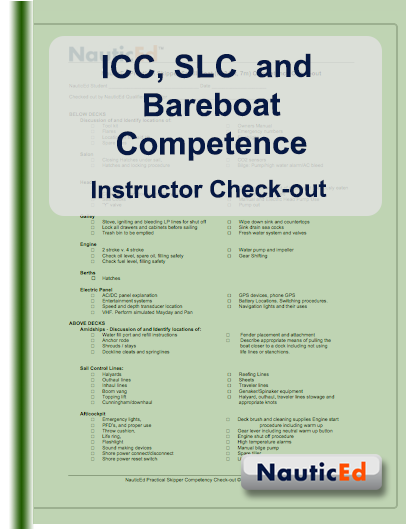- Home
- About Us
- Sailing Courses
- Powerboat Courses
- SLC - International License
- Sailing Vacations
- Find an On-Water Instructor
- Practical Courses
- Fighting Childhood Cancer
- Free Courses Signup
- Student Benefits
- Gift a Sailing Course
- Sailing Opportunities
- Sailing Licenses and Certifications
- About the Sailing Certifications
- Sailing Blog & Helpful Articles
- NauticEd Podcast Series
- Yacht Charter Resources
- School Signup
- Instructor Signup
- Affiliate Signup
- Boat Sharing Software
- Sailing Industry Services
- Support & Contact
- Newsroom
- Privacy Policy
Sailing Instruction
Students who do a real on-the-water practical verification of their competence by a qualified instructor, gain a Practical Verification stamp on their certificate and sailing resume. The professional instructor has physically taken them out on the water and deemed the student to be competent to the associated Rank. The instructor then certified this via a check box against that student on a secure login to a special NauticEd instructor verification page.
When performing on the water sailing instruction, Instructors use these check list documents to check the practical competence of a student.
Practical Competence Check-Out Documents
Verified Practical Crew, Skipper and Bareboat Charter Master Competence Stamps
Knowing the theory is all too important and having the practical skills is equally important. This is why many countries require proof of both.
Thus practical sailing instruction and verification of practical sailing abilities comes with the NauticEd Resume. When doing sailing instruction, our instructors are required to take the student through a thorough test of practical sailing skills.
In general, depending on the practical stamp being sort, the student will have been tested on the following.
Below Decks
The student is able easily familiarize themselves, identify, make proper use of areas and equipment including:
- Stowage Areas: safety items that might be stored and their location - such as fire extinguishers, flares, first aid, tool kit.
- Salon: Understands closing hatches under sail, CO2 sensors, bilge pump operation.
- Head: Proper use of head, "y" valve, seacocks, shower drain.
- Galley: Proper use of the stove and LP gas procedures, seacocks.
- Engine: Able to check and replenish oil levels, transmission fluids, transmission linkages, raw water intakes and strainers, identify water pump, packing gland, fuel filters.
- Electric Panel: Understands AC and DC sides and all switches. Understands DC power conservation and recharging.
Above Decks
The student is able easily familiarize themselves, identify, make proper use of areas and equipment above deck including:
- Safety Items: emergency lights, PFD's Life Rings and throwable floatation devices.
- House: shore power, fuel-water-waste tanks, emergency tiller.
- Running Rigging: halyards, outhaul-inhaul lines, boom vang, sheets, traveler, boom topping lift.
- Forward: Windlass operation and reset switch, roller furling operation.
- Amidships: Fender placement and attachment, main roller furler, main sail attachments to clew, head and tack.
- Aft/cockpit: Engine starting and stopping, gear lever usage, engine alarms, life lines, wheel lock.
- Electronics: GPS - turn on and obtain position, Autopilot, wind-depth-speed instruments, place emergency VHF call.
Sailing and Maneuvering
The student is able to:
- Under power, confidently maneuver the boat in circles, figure 8's, in forward and reverse, back in a straight line and into a slip, go forward into a slip with out using excessive speed or power. Understands momentum, propwalk and windage on the vessel. Begins backing maneuvers with vessel stern to wind. Can parallel dock in various wind conditions.
- Hoist, douse, furl and unfurl sails.
- Confidently handle the boat under sail including giving proper commands to crew.
- Correctly set the sails at optimum angles for all points of sail.
- Tack and gybe confidently using proper sheet handling techniques.
- Heave to.
- Demonstrate knowledge of right of way in multiple situations.
- Under sail, hold a straight course.
Docking, Anchoring and Mooring
- Leave and return to dock using proper techniques including springing off/on and commands to the crew.
- Demonstrate proper anchoring techniques including site selection and scope determination.
- Demonstrate proper mooring techniques.
Crew Over Board
- Successfully demonstrated several crew over board retrieval measures.
Knots
- Bowline, Figure 8, Cleat hitch, Clove hitch, Round turn two half hitches, Reef knot, Sheet bend.
Navigation
- Navigation Rules.
- Tide and current tables.
- Understand lights, buoys, and fog signals.
- Proficiency with instruments required for navigation including:
- Steering compass.
- Handbearing compass and / or pelorus.
- Binoculars.
- Protractor or parallel rule.
- Depth sounder or leadline.
- Knotmeter.
- Convert courses and bearings between true, magnetic, and compass.
- Plot a dead reckoning position on a chart using speed, time and course to steer.
- Allow for the effect of current and leeway to plot the estimated position.
- Determine a course to steer which takes into account known current and leeway.
- Determine current given the course steered and speed and two observed positions.
- Plot a chart position from terrestrial objects using:
- Two or more bearings on different objects taken at one time.
- Bearings at different times (i.e. a running fix).
- One bearing and transit range.
- One distance (i.e. a sounding or dipping a light) and one bearing.
- Explain the significance of shapes, colors, and lights used in the buoyage.
NauticEd feels that practical sailing instruction is important from a professional instructor and has thus ensured that this is a part of the Sailing Resume rather than proof of just theory knowledge. Contact a professional NauticEd Instructor today from the list of NauticEd sailing schools for sailing instruction.




